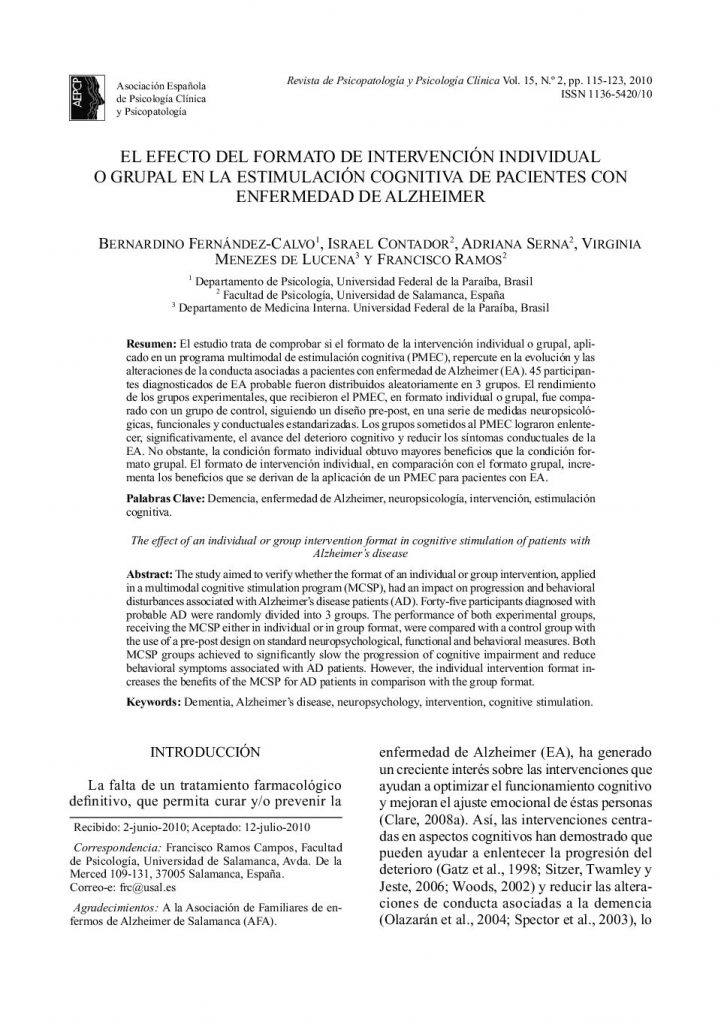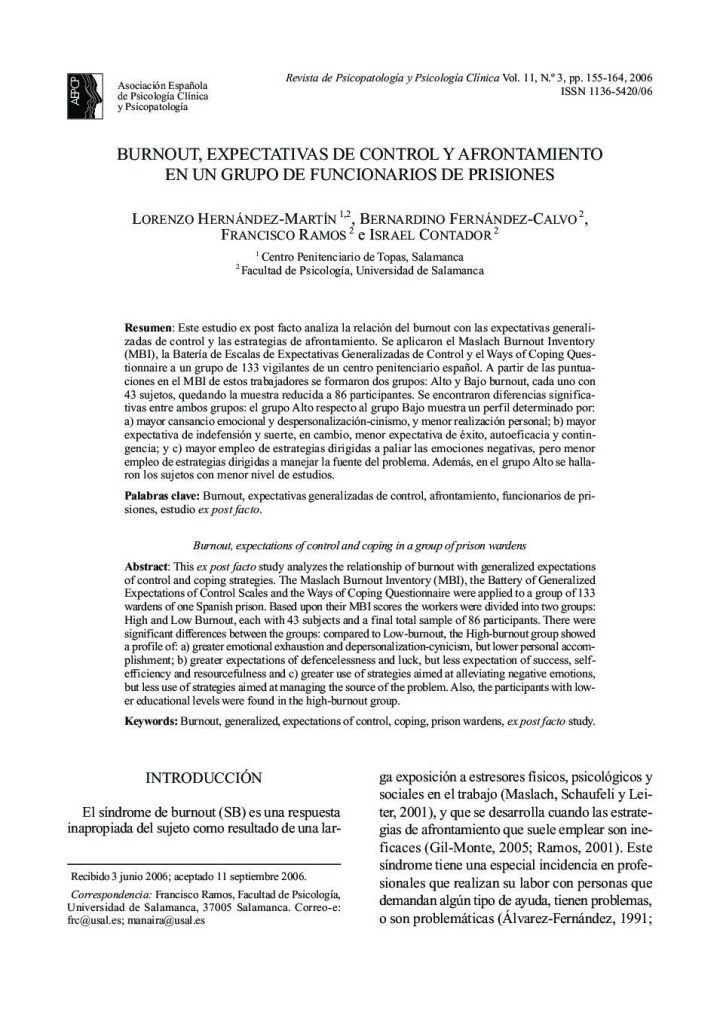Efecto del formato de intervención individual o grupal en la estimulación cognitiva de pacientes con enfermedad de Alzheimer.

- Efectividad de las terapias psicológicas: Un análisis de la realidad actual.
- Obsesividad e Intrusiones Alimentarias en pacientes con trastornos alimentarios y población general.
- Efecto del formato de intervención individual o grupal en la estimulación cognitiva de pacientes con enfermedad de Alzheimer.
- Depresión y calidad de vida relacionada con la salud en pacientes con artrosis: Diferencias de género.
- Cuestionario de Ayuda Recibida de la Ex pareja (CARE): Un Instrumento breve para evaluar la co-parentalidad post divorcio.
- Dionisio Pérez y Pérez (1926-2010)
The study aimed to verify whether the format of an individual or group intervention, applied in a multimodal cognitive stimulation program (MCSP), had an impact on progression and behavioral disturbances associated with Alzheimer’s disease patients (AD). Forty-five participants diagnosed with probable AD were randomly divided into 3 groups. The performance of both experimental groups, receiving the MCSP either in individual or in group format, were compared with a control group with the use of a pre-post design on standard neuropsychological, functional and behavioral measures. Both MCSP groups achieved to significantly slow the progression of cognitive impairment and reduce behavioral symptoms associated with AD patients. However, the individual intervention format increases the benefits of the MCSP for AD patients in comparison with the group format.
El estudio trata de comprobar si el formato de la intervención individual o grupal, aplicado en un programa multimodal de estimulación cognitiva (PMEC), repercute en la evolución y las alteraciones de la conducta asociadas a pacientes con enfermedad de Alzheimer (EA). Cuarenta y cinco participantes diagnosticados de EA probable fueron distribuidos aleatoriamente en 3 grupos. El rendimiento de los grupos experimentales, que recibieron el PMEC, en formato individual o grupal, fue comparado con un grupo de control, siguiendo un diseño pre-post, en una serie de medidas neuropsicológicas, funcionales y conductuales estandarizadas. Los grupos sometidos al PMEC lograron enlentecer, significativamente, el avance del deterioro cognitivo y reducir los síntomas conductuales de la EA. El formato de intervención individual, en comparación con el formato grupal, incrementa los beneficios que se derivan de la aplicación de un PMEC para pacientes con EA.




